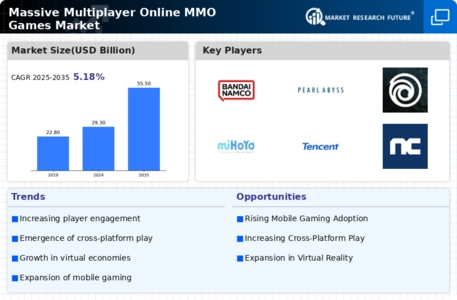Introduction: The Intellectual Battlefield
For decades, Strategy Games have stood as the intellectual pillars of the interactive entertainment industry. Unlike the twitch reflexes required for FPS Games or the narrative endurance needed for sprawling RPG Games, strategy titles demand foresight, resource management, and tactical adaptability. Historically, this genre was the exclusive domain of PC Gaming, where the precision of a mouse and the complexity of a keyboard allowed for the micromanagement of vast armies and intricate economies. However, the landscape of gaming has shifted dramatically. Through advancements in Gaming Hardware and a shift in Game Design philosophy, the genre has broken free from its niche roots to capture a global audience across every conceivable platform.
The evolution of the genre is a testament to the industry’s technological leaps. From the early days of 2D grid-based tactics to the modern era of hyper-realistic 3D battlefields powered by the latest Graphics Cards, strategy games have continually pushed the boundaries of what is possible. Today, whether you are following PlayStation News regarding the latest tactical exclusives or reading PC Gaming forums about the newest 4X civilization builders, it is clear that the genre has diversified. This article explores the journey of strategy games, examining how they transitioned from complex, text-heavy simulations to visually stunning 3D experiences that appeal to both hardcore veterans and casual players alike.
Section 1: From Sprites to Polygons – The Hardware Revolution
The Shift to 3D and Broadening Horizons
In the annals of Gaming History, the transition from 2D sprites to 3D polygons marks a pivotal moment for strategy games. In the early 90s, processing power was limited. Developers relied on isometric viewpoints and sprite-based art to convey depth. However, as Gaming Consoles and Gaming PCs began to embrace 3D acceleration, the genre underwent a metamorphosis. The introduction of hardware capable of handling complex 3D geometry allowed developers to move away from abstract representations of war toward visceral, realistic simulations.
This shift was not merely aesthetic; it was a strategic business move to capture a wider audience. By leveraging the power of new hardware to render 3D environments, publishers could market these games not just as “thinking games,” but as visual spectacles. This era saw a deliberate move to position hardware as a gateway to immersive worlds, distancing the medium from the stigma of being purely for “nerds” or niche hobbyists. The visual fidelity attracted players who might not normally play games, bridging the gap between the casual consumer and the hardcore strategist.
The Engine Wars: Unity and Unreal
Modern Game Development owes much to the democratization of powerful game engines. Following Unity News and Unreal Engine News reveals how these tools have empowered studios to create deep strategic experiences without building technology from scratch. These engines handle the heavy lifting of physics calculations, AI pathfinding, and rendering, allowing designers to focus on mechanics and balance. This has led to a surge in both AAA Games and Indie Games within the strategy sector, ranging from massive total war simulations to intimate, squad-based tactical shooters.
Section 2: Crossing the Divide – Strategy on Consoles
The UI/UX Challenge
Bringing complex strategy titles to the living room has always been one of the industry’s greatest challenges. The precision of a mouse is difficult to replicate with Game Controllers. Historically, ports of PC strategy games to consoles suffered from clunky interfaces and slow cursor movement. However, recent generations have seen a revolution in UI design. Developers have reimagined control schemes, utilizing radial menus and context-sensitive buttons to make Console Gaming viable for the genre.

For instance, recent Xbox News often highlights the integration of strategy titles into services like Game Pass, optimized specifically for controllers. Similarly, Nintendo News frequently covers the success of grid-based tactical RPGs that feel perfectly at home on handheld devices. The key has been simplification without “dumbing down.” By streamlining the number of clicks required to perform an action and automating mundane tasks (like unit pathing or resource gathering), developers have made the genre accessible without sacrificing depth.
Broadening the Demographic
The push to include strategy games on consoles was part of a larger effort to diversify the gaming ecosystem. By moving away from the “spreadsheet simulator” reputation, the industry opened the doors to players interested in narrative and spectacle. This often involved toning down niche elements—such as overly complex erotic dating sub-genres or impenetrable text adventures—in favor of polished, 3D experiences that showcased the hardware’s capabilities. This curation helped legitimize the console market as a home for serious gaming, distinct from the arcade ports of the past.
Case studies like Halo Wars or the modern XCOM reboots demonstrate this success. These titles proved that with the right design adjustments, a controller-based strategy game could be critical and commercial successes. They paved the way for PlayStation News headlines announcing major strategy exclusives, proving that the genre was no longer a PC-only club.
Section 3: The Modern Landscape – Esports, Mobile, and Tech
The Rise of Competitive Strategy and MOBA Games
No discussion of strategy games is complete without addressing the elephant in the room: MOBA Games. Born from the modding community of RTS classics (a staple of Blizzard and Warcraft history), the Multiplayer Online Battle Arena genre has come to dominate Esports News. Titles covered in League of Legends News and Dota 2 News generate billions in revenue and fill stadiums globally. These games distilled the RTS formula down to its most exciting elements: micro-management, team coordination, and ability usage, discarding the slower base-building aspects.
This shift has driven a massive market for high-performance Gaming Peripherals. To compete at a high level, players invest in mechanical Gaming Keyboards with rapid actuation switches, lightweight Gaming Mice with high DPI sensors, and Gaming Headsets for crystal-clear team communication. The competitive scene has become a driving force for hardware sales, influencing the design of everything from Gaming Chairs to high-refresh-rate Gaming Monitors.
Mobile Gaming: Strategy in Your Pocket
While PC remains the home of high-complexity simulations, Mobile Gaming has become the largest platform for strategy by sheer player count. Touchscreens offer an intuitive interface for drag-and-drop unit placement, making them ideal for Tower Defense and 4X “Lite” games. The financial success of mobile strategy titles has influenced Gaming Industry trends, pushing major publishers to develop mobile spin-offs of their biggest franchises. We see this in Call of Duty News regarding mobile tactics or Minecraft News regarding strategy spin-offs like Minecraft Legends.
Hardware Requirements for the Modern Strategist
Despite the accessibility of mobile, the bleeding edge of the genre still demands serious power. Modern 4X games and real-time strategy titles with thousands of units on screen require robust Gaming PCs or high-end Gaming Laptops. The CPU is often the bottleneck in these titles, as the computer must calculate the AI decisions for dozens of factions simultaneously. Furthermore, as Game Releases push for 4K resolution and ray tracing, the demand on Graphics Cards has increased. Enthusiasts looking to build the ultimate command center often look to Steam News for system requirements that push the limits of current tech.
Section 4: Future Trends and Technological Frontiers
![Xfce desktop screenshot - xfce:4.12:getting-started [Xfce Docs]](https://revolutionarena.com/pt-br/wp-content/uploads/sites/2/2024/01/console-nintendo-64.jpg)
Cloud Gaming and Accessibility
One of the most promising developments for strategy games is Cloud Gaming and Game Streaming. Services that offload processing to remote servers allow players to run CPU-intensive simulations on modest hardware. This is a game-changer for the genre, potentially allowing for massive, persistent worlds with millions of AI agents that would melt a standard consumer PC. As internet infrastructure improves, we may see a resurgence of MMORTS (Massively Multiplayer Online Real-Time Strategy) games, a sub-genre that has historically struggled due to technical limitations.
VR and AR: The Commander’s View
VR Gaming and AR Gaming present a unique opportunity for strategy developers. Imagine standing over a virtual table, moving units with your hands like a general in a sci-fi movie. This “god view” perspective is intuitive and immersive. While still a niche within a niche, Game Reviews of VR strategy titles often praise the tactile feel of the gameplay. As headsets become lighter and more affordable, this could become the preferred way to play tabletop-style tactics games.
The Role of AI and Procedural Generation
Artificial Intelligence is not just for the opponent; it is becoming a tool for Game Design. Developers are using machine learning to create more responsive and unpredictable enemy AI, moving away from the “cheating” AI of the past that simply received resource bonuses to compete with humans. Furthermore, procedural generation ensures that maps and campaigns are infinitely replayable, a feature highly valued in the Indie Games community and highlighted in Epic Games News regarding engine features.
Pros, Cons, and Best Practices for Strategy Gamers

The Pros of the Modern Era
- Accessibility: With Cross-Platform play and controller support, more people can play than ever before.
- Variety: From Retro Gaming via Game Emulation to cutting-edge AAA Games, the library is vast.
- Community: The Gaming Community for strategy games is one of the most dedicated, producing Game Mods that extend the life of titles for decades (e.g., Skyrim or Total War mods).
The Cons and Pitfalls
- Monetization: The shift to mobile and “Games as a Service” has introduced aggressive microtransactions, often criticized in Gaming News.
- Hardware Costs: To experience the full fidelity of modern PC strategy games, the cost of entry for Gaming Tech (GPUs, CPUs) remains high.
- Complexity Creep: Some modern titles struggle to balance depth with approachability, alienating new players.
Best Practices for Setup
If you are looking to dive deep into the genre, ergonomics are key. Strategy sessions can last for hours. Investing in ergonomic Gaming Chairs and wrist rests for Gaming Keyboards is essential to prevent strain. Furthermore, for those into Competitive Gaming like StarCraft II or Age of Empires IV, a high-refresh-rate monitor is crucial for tracking fast-moving units.
Conclusion
The trajectory of strategy games mirrors the broader history of the video game industry. What began as abstract, text-based exercises on mainframe computers has evolved into a diverse genre encompassing everything from mobile time-wasters to professional Esports played in arenas. The industry’s push to utilize 3D polygons and target broader demographics—strategies that began in the era of the original PlayStation and continue today—has successfully brought tactical gaming to the masses.
Whether you are a console gamer enjoying a turn-based RPG on the couch, a PC enthusiast commanding armies in 4K, or a commuter playing a tower defense game on your phone, the core appeal remains the same: the satisfaction of outsmarting the opposition. As technology continues to advance with Cloud Gaming and AI, the future of strategy games looks brighter, deeper, and more accessible than ever before. The battlefield is ready; choose your platform, upgrade your hardware, and make your move.













